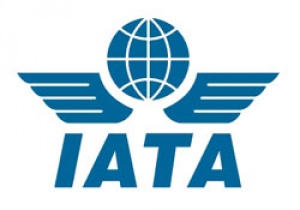Industry supports ICAO environment leadership

Montreal - The International Air Transport Association (IATA), in a joint paper with the Airports Council International (ACI), the Civil Air Navigation Services Organisation (CANSO) and the International Coordinating Council of Aerospace Industries Associations (ICCAIA), called for governments to adopt a global sectoral approach for managing aviation’s emissions in the Kyoto II period. The industry further urged governments to adopt the following three sequential targets to drive progress:
* Improving fuel efficiency by an average of 1.5% annually to 2020
* Stabilizing carbon emissions from 2020 with carbon-neutral growth
* And reducing net carbon emissions 50% by 2050 compared to 2005
These are the key elements of the aviation industry’s plan for tackling CO2 emissions, presented by IATA Director General and CEO, Giovanni Bisignani at the International Civil Aviation Organization’s (ICAO) High Level Meeting (HLM) on Aviation and Climate Change, an important step as governments prepare for the COP 15 conference in December. The jointly developed Working Paper 19: A Global Sectoral Approach for Aviation was presented on behalf of the entire industry, including airlines, airports, air navigation service providers and manufacturers through their respective industry associations.
“In preparation for COP15, industry is asking governments to safeguard ICAO’s continued leadership by supporting a global sectoral approach and making our targets a part of your (governments) solution,” said Bisignani.
Bisignani noted the historical significance of the united industry position. “This is the first time that the air transport industry - representing 32 million jobs and supporting $3.5 trillion in economic activity - has taken such a relevant and united global position on climate change,” said Bisignani.
ADVERTISEMENT
Building on a Solid Track Record of Cooperation: “Our history tells us that, with the coordinated support of governments, aviation can deliver amazing results. Together we made aviation the safest way to travel. To achieve our future environmental targets, industry and governments must work even more closely together. That means setting ambitious targets and applying them in a way that accounts for the special needs of airlines in developing states. ICAO has a long track record of implementing global standards in a common but differentiated way,” said Bisignani.
Bisignani noted the progress that has already been made on environment by the aviation industry working as a sector. The industry’s four pillar strategy focused on technology, operations, infrastructure and positive economic measures is recognized by governments. “Already our industry’s four pillar strategy, recognized by the last ICAO Assembly, has saved millions of tonnes of carbon emissions - nearly 70 million tonnes from operations and infrastructure alone. This year aviation’s emissions will fall by some 6.5% or 43 million tonnes of CO2. The recession is responsible for 4.7% or 31 million tonnes. The remaining 1.8% (12 million tonnes) is a direct result of the strategy,” said Bisignani.
Implementation: Industry pledged its support in implementation. “Industry is here to help with expertise that has driven many important global changes - from 100% e-ticketing to driving a 75% reduction in noise to the 70% improvement in fuel efficiency. A global sectoral approach is the most effective way to reduce aviation’s emissions. Adopting it will make aviation a role model for industry cooperation with governments within the framework of the United Nations,” said Bisignani.
Defining a Global Sectoral Approach: A global sectoral approach for aviation and the environment has three main elements:
* That aviation’s carbon emissions are accounted for at a global level, not by state
* That aviation should be fully accountable for its CO2 emissions, but only required to pay once for these emissions
* That industry has access to global carbon markets to offset emissions until technology can provide the ultimate solution
A Strong Aviation Position: Bisignani urged governments to give ICAO a strong aviation position take to Copenhagen. “This HLM is an historic leadership opportunity. The industry is united in presenting a forward-looking vision and the ambitious targets to deliver it. We ask you (governments through ICAO) to take our targets to Copenhagen and achieve a mandate for ICAO to manage aviation’s global emissions effectively as an industrial sector,” said Bisignani.
Access Giovanni Bisignani’s remarks
-IATA-
Contact:
Anthony Concil
Director Corporate Communications
Tel: +41 22 770 2967
Email: [email protected]
Notes for Editors:
* IATA (International Air Transport Association) represents some 230 airlines comprising 93% of scheduled international air traffic.
* Details on the ICAO HLM
* Joint paper to the ICAO High Level Meeting (pdf)
* The ICAO HLM is a key milestone in preparation for December’s Copenhagen Climate Conference. Bisignani spoke on Wednesday 7 October, the opening day of the three-day conference being held in Montreal, Canada.
* Note that the 6.5% carbon emission reduction anticipated for 2009 is an exact figure and is consistent with the previously reported 7% reduction (rounded). Similarly, the 1.8% and 4.7% reduction due to the industry’s efforts and the recession is consistent with the previously reported rounded figures of 2% and 5%.

